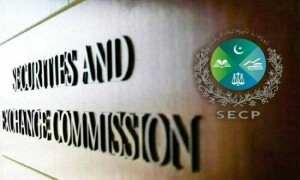The fiscal deficit is ballooning out of control. Overall deficit is reported at Rs3.1 trillion (3.7 percent of GDP) in 9MFY23 which is the highest ever recorded deficit in 9M of any fiscal year. Surprisingly, the situation is not as bleak in terms of GDP. In fact, there has been a slight improvement compared to the same period last year.
The deficit in the third quarter stood at Rs1.4 trillion (1.7 percent of GDP) and a primary deficit of Rs385 billion (0.5 percent of GDP). Moreover, the primary surplus in the first two quarters of the fiscal ensured that the overall primary balance in 9MFY23 is still in surplus at Rs504 billion (0.6 percent of GDP).
The deficit in the third quarter is higher due to higher expenditure where current expenditure is up by 18 percent YoY and the debt servicing cost is up by a whopping 52 percent – yet it is lower than what it was in the second quarter. In terms of revenue, on year-on-year basis, the third quarter was not that bad as both tax and non-tax revenues exhibited a decent growth – up by 16 percent and 23 percent respectively in the third quarter and the growth in the nine months is similar – tax revenues are up by 17 percent and non-tax revenues are up by 25 percent. Overall fiscal revenues are up by 18 percent to Rs6.9 trillion in 9MFY23.
However, there are signs of slippages in the third quarter as compared to the previous quarter. The fiscal revenues are down by 17 percent QoQ. The dip in tax revenues is moderate at 3 percent to Rs1.9 billion while the non-tax revenues are down by 52 percent to Rs353 billion. The higher decline in non-tax revenues is due to high transfer of SBP profits in the second quarter at Rs371 billion while the number stood at Rs94 billion in the 3Q. This is partially compensated for by higher petroleum levy at Rs185 billion in the 3Q as compared to Rs56 billion in the second quarter.

In the case of tax revenues, the direct taxes are up by 40 percent YoY in 3Q while the indirect taxes are taking a hit, as sales tax are up by mere 6 percent while there is no change in the custom duties. The import restrictions have more pronounced impact on sales tax and especially custom duties, and the situation is likely to worsen going forward.
The fourth quarter could be worse both in terms of revenues and debt servicing. The economic slowdown is having its impact on the revenues which are mostly collected at the import stage and the petroleum levy is likely to be short due to a sharp dip in consumption.
The biggest expense is now becoming the debt servicing which on consolidated basis stood at Rs I trillion in 3QFY23 and that is on the lower side given the increase in debt level and interest rates, as the servicing stood at Rs1.6 trillion in the 2QFY23. Around 65-70 percent of domestic debt is floating and higher proportion of it is PIBs where the payment is biannually and since fiscal accounts are cash based in Pakistan, the debt servicing could be very high in the 4Q and so would the deficit.

Thus,the fourth quarter could be very challenging. The expenditure ought to grow due to higher debt servicing costs and lower revenues which are going to be challenged even further due to the fall in economic activities, as in April diesel sales were down by 50 percent and petrol by 25 percent. The situation of cement and other items is no different, and the deficit is likely to break all records in the last quarter.
In this backdrop, the budget-making process is extremely challenging for the government, as the debt servicing is likely to touch Rs7 trillion and the revenues are going to remain under pressure due to import restrictions and economic slowdown. And at the same time the outgoing government is planning to present a populous budget to regain its lost political capital. That doesn’t make sense and seeing these contradictions, the economic uncertainties will only grow.
























Comments
Comments are closed.